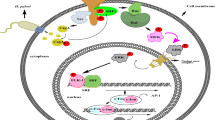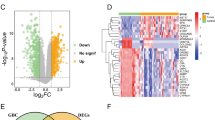Abstract
Squamous epithelium in mammals has evolved an atypical stress response involving down-regulation of the classic HSP70 protein and induction of sets of proteins including one named SEP53. This atypical stress response might be due to the unusual environmental pressures placed on squamous tissue. In fact, SEP53 plays a role as an anti-apoptotic factor in response to DNA damage induced by deoxycholic acid stresses implicated in oesophageal reflux disease. SEP53 also has a genetic signature characteristic of an adaptively and rapidly evolving gene, and this observation has been used to imply a role for SEP53 in immunity. Physiological models of squamous tissue are required to further define the regulation and function of SEP53. We examined whether porcine squamous epithelium would be a good model to study SEP53, since this animal suffers from a bile-reflux disease in squamous oesophageal tissue. We have (1) cloned and sequenced the porcine SEP53 locus from porcine bacterial artificial chromosome genomic DNA, (2) confirmed the strikingly divergent nature of the C-terminal portion of the SEP53 gene amongst mammals, (3) discovered that a function of the conserved N-terminal domain of the gene is to maintain cytoplasmic localisation, and (4) examined SEP53 expression in normal and diseased porcine pars oesophagea. SEP53 expression in porcine tissue was relatively confined to gastric squamous epithelium, consistent with its expression in normal human squamous epithelium. Immunohistochemical staining for SEP53 protein in normal and damaged pars oesophagea demonstrated significant stabilisation of SEP53 protein in the injured tissue. These results suggest that porcine squamous epithelium would be a robust physiological model to examine the evolution and function of the SEP53 stress pathway in modulating stress-induced responses in squamous tissue.





Similar content being viewed by others
References
Anderson SI, Lopez-Corrales NL, Gorick B, Archibald AL (2000) A large-fragment porcine genomic library resource in a BAC vector. Mamm Genome 11:811–814
Ayles HL, Friendship RM, Ball RO (1996) Effect of dietary particle size on gastric ulcers, assessed by endoscopic examination, and relationship between ulcer severity and growth performance of individually fed pigs. Swine Health 4:211–216
Blake MJ, Gershon D, Fargnoli J, Holbrook NJ (1990) Discordant expression of heat shock protein mRNAs in tissues of heat-stressed rats. J Biol Chem 265:15275–15279
Blake MJ, Fargnoli J, Gershon D, Holbrook NJ (1991) Concomitant decline in heat-induced hyperthermia and HSP70 mRNA expression in aged rats. Am J Physiol 260:R663–667
Christie KN, Thomson C, Hopwood D (1995) A comparison of membrane enzymes of human and pig oesophagus; the pig oesophagus is a good model for studies of the gullet in man. Histochem J 27:231–239
Ciocca DR, Calderwood SK (2005) Heat shock proteins in cancer: diagnostic, prognostic, predictive, and treatment implications. Cell Stress Chaperones 10:86–103
Crespi BJ, Summers K (2006) Positive selection in the evolution of cancer. Biol Rev 81:407–424
Darragh J, Hunter M, Pohler E, Dillon JF, Ross P, Kernohan N, Hupp TR (2006) The calcium binding domain of SEP53 is required for survival in response to DCA-mediated stress. FEBS J 273:1930–1947
Fitzgerald RC, Farthing MJ (2003) The pathogenesis of Barrett’s esophagus. Gastrointest Endosc Clin N Am 13:233–255
Ford MJ (2002) Applications of selective neutrality tests to molecular ecology. Mol Ecol 11:1245–1262
Friendship RM (1999) Gastric ulcers. In: Straw BE et al (ed) Diseases of swine. Iowa State Univesity Press, Ames Iowa, pp 685–694
Friendship RM (2003) Gastric ulcers; an under-recognized cause of mortality and morbidity. Adv Pork Prod 14:159–163
Hopwood D, Moitra S, Vojtesek B, Johnston DA, Dillon JF, Hupp TR (1997) Biochemical analysis of the stress protein response in human oesophageal epithelium. Gut 41:156–163
Humphray SJ, Scott C, Clark R, Marron B, Plumb R, Bender C, Camm N, Davis J, Jenks A, Noon A et al (2007) A high utility integrated map of the pig genome. Genome Biology 8:139, DOI 10.1186/gb-2007-8-7-r139
Hupp TR (2000) Development of physiological models to study stress protein responses. Methods Mol Biol 99:465–483
Hurst LD (2002) The Ka/Ks ratio:diagosing the form of sequence evolution. Trends Biochem Sci 18:486–487
Imai FL, Uzawa K, Nimura Y, Moriya T, Imai MA, Shiiba M, Bukawa H, Yokoe H, Tanzawa H (2005) Chromosome 1 open reading frame 10 (C1orf10) gene is frequently down-regulated and inhibits cell proliferation in oral squamous cell carcinoma. Int J Biochem Cell Biol 37:1641–1655
Jolly AJ, Wild CP, Hardie LJ (2004) Acid and bile salts induce DNA damage in human oesophageal cell lines. Mutagenesis 19:319–324
Lakhotia SC, Singh BN (1996) Synthesis of a ubiquitously present new HSP60 family protein is enhanced by heat shock only in the Malpighian tubules of Drosophila. Experientia 52:751–756
Little TJ, Cobbe N (2005) The evolution of immune-related genes from disease carrying mosquitoes: diversity in a peptidoglycan- and a thioester-recognizing protein. Insect Mol Biol 14:599–605
Little TJ, Colbourne JK, Crease TJ (2004) Molecular evolution of daphnia immunity genes: polymorphism in a gram-negative binding protein gene and an alpha-2-macroglobulin gene. J Mol Evol 59:498–506
Little TJ, Nelson L, Hupp TR (2007) Adaptive evolution of a stress response protein. PLos One 2:e1003
Metzler B, Hu Y, Dietrich H, Xu Q (2000) Increased expression and activation of stress-activated protein kinases/c-Jun NH(2)-terminal protein kinases in atherosclerotic lesions coincide with p53. Am J Pathol 156:1875–1886
Mosser DD, Morimoto RI (2004) Molecular chaperones and the stress of oncogenesis. Oncogene 23:2907–2918
Obbard DJ, Jiggins FM, Halligan DL, Little TJ (2006) Natural selection drives extremely rapid evolution in antiviral RNAi genes. Curr Biol 16:580–585
Olliver JR, Hardie LJ, Dexter S, Chalmers D, Wild CP (2003) DNA damage levels are raised in Barrett’s oesophageal mucosa relative to the squamous epithelium of the oesophagus. Biomarkers 8:509–521
Reid BJ, Blount PL, Rabinovitch PS (2003) Biomarkers in Barrett’s esophagus. Gastrointest Endosc Clin N Am 13:369–397
Roosendaal R, Vos JH, Roumen T, van Vugt R, Cattoli G, Bart A, Klaasen HL, Kuipers EJ, Vandenbroucke-Grauls CM, Kusters JG (2000) Slaughter pigs are commonly infected by closely related but distinct gastric ulcerative lesion-inducing gastrospirilla. J Clin Microbiol 38:2661–2664
Schlenke TA, Begun DJ (2003) Natural selection drives Drosophila immune system evolution. Genetics 164:1471–1480
Schook LB, Beever J, Rogers J, Humphray S, Archibald A, Chardon P, Milan D, Rohrer G, Eversole K (2005) Swine Genome Sequencing Consortium (SGSC): a strategic roadmap for sequencing the pig genome. Compar Funct Genom 6:251–255
Vogelstein B, Kinzler KW (2004) Cancer genes and the pathways they control. Nat Med 10:789–799
Wild CP, Hardie LJ (2003) Reflux, Barrett’s oesophagus and adenocarcinoma: burning questions. Nat Rev Cancer 3:676–684
Xu Z, Wang MR, Xu X, Cai Y, Han YL, Wu KM, Wang J, Chen BS, Wang XQ, Wu M (2000) Novel human esophagus-specific gene c1orf10: cDNA cloning, gene structure, and frequent loss of expression in esophageal cancer. Genomics 69:322–330
Yagui-Beltran A, Craig AL, Lawrie L, Thompson D, Pospisilova S, Johnston D, Kernohan N, Hopwood D, Dillon JF, Hupp TR (2001) The human oesophageal squamous epithelium exhibits a novel type of heat shock protein response. Eur J Biochem 268:5343–5355
Acknowledgements
This work was supported in part by grants from the Cancer Research UK, the BBSRC, and the Association for International Cancer Research.
Author information
Authors and Affiliations
Corresponding author
Rights and permissions
About this article
Cite this article
Nelson, L., Anderson, S., Archibald, A.L. et al. An animal model to evaluate the function and regulation of the adaptively evolving stress protein SEP53 in oesophageal bile damage responses. Cell Stress and Chaperones 13, 375–385 (2008). https://doi.org/10.1007/s12192-008-0037-1
Received:
Revised:
Accepted:
Published:
Issue Date:
DOI: https://doi.org/10.1007/s12192-008-0037-1




